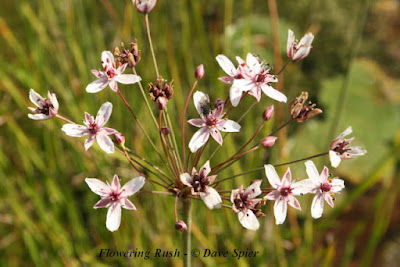American Kestrels (revised with new links and photos)
© Dave Spier
They're easiest to see when they sit on power lines and watch the grass below. In the absence of these utility perches, they may simply turn into the wind and hover on beating wings. Oil droplets coating the bird's eyes filter out haze and glare. Retinas, each packed with a million light-collecting cells, give it vision eight times better than a human's. Theoretically they could see a mouse from the top of the Empire State Building. After prey is spotted, the hawk drops like a stone and reaches out with needle-sharp talons. I've also heard of them gliding downhill and grabbing a mouse running across the snow, a most foolish thing for rodents to do. This maneuver caught the attention of two crows which gave chase, causing the kestrel to drop its prey. Undaunted, the hawk circled back and retrieved its fallen victim.
The American Kestrel, Falco sparverius, was once known as the sparrow hawk, a name derived from its habit of eating small songbirds, but in reality these comprise only one-third of the hawk's winter diet. On an annual basis, mice and other small rodents, plus a few frogs and reptiles represent a much larger proportion of its intake. During warm weather it eats primarily insects, and late in summer the kestrel dines almost exclusively on juicy grasshoppers which are plentiful and easy to catch. This earned the bird the nickname "grasshopper hawk" from early ornithologists. Kestrels also eat crickets, cicadas, moths, beetles and ants. Small snakes are readily dispatched, but large snakes present a problem if they wrap themselves around the bird's legs. Small roadkills, and songbirds that fly into windows, are a source of easy meals.
Kestrels are the smallest members of the falcon family, a group that is no longer considered close relatives of the true hawks. Male kestrels are nine inches long while the larger females may reach 12 inches. On average they're about the size of a robin or blue jay which makes all these birds vulnerable to larger winged predators, especially Cooper's Hawks. On the other hand, kestrels will not tolerate competitors in their hunting territory and have been known to chase off larger, but less agile, raptors like the redtail. The falcon family also includes the kestrel's larger and more famous cousin, the Peregrine, which is uncommon in the northern Finger Lakes Region of New York.
If you're close enough, kestrels are easy to recognize. In addition to small size, on a white face look for bold black marks creating a "mustache" and "sideburns." Males have gray wings and rusty-red tails ending with a black band and white feather tips. Females are mostly rufous-brown with fine cross-barring on the back, wings and tail. The lighter undersides of both are spotted, giving way to white under the tail. The wings and tail are relatively long, much like the larger harriers which also hunt the open countryside. (Harriers, also displaying sexual plumage dimorphism, are in a different family.) Unlike harriers, falcons are noted for flying with pointed wingtips, an advantage for faster speed. Peregrine falcons, which can reach a diving speed of 200 mph, are the fastest animals on earth.
Kestrels are year-round residents throughout New York and most of the United States, and a summer breeder across much of Canada and the northern Great Plains states. You can find an interactive range map on eBird under Explore Data -> Range...Maps.
Kestrels nest in tree cavities, often taking over old woodpecker holes, but the cutting of dead trees for firewood results in a shortage of natural nesting cavities. Fortunately, kestrels readily take to large nest boxes erected specifically for the purpose. The size should be at least eight inches square inside and 15 inches tall with a three-inch entrance hole centered three inches below the top. Mount it at least 10 feet above the ground. As controllers of insect and mouse populations, kestrels are valuable to gardeners and farmers, and nest boxes are one way to encourage their presence.
For more information, visit All About Birds.
Corrections, comments and questions are always welcome at northeastnaturalist@yahoo.com or connect through my Facebook page and photo page. Other nature and geology topics can be found on the parallel blogs Adirondack Naturalist and Heading Out. There's also a community-type page for The Northeast Naturalist.







































_%C2%A9DaveSpier_26362+txt.jpg)



